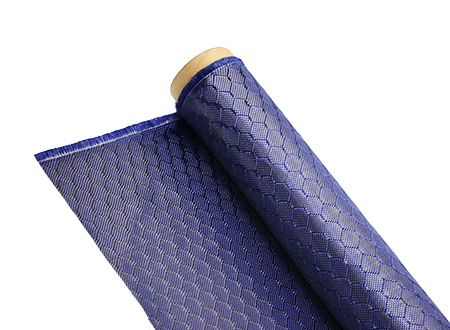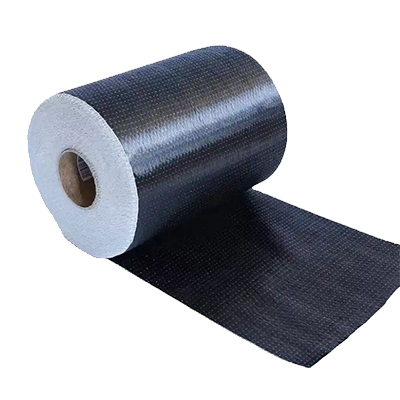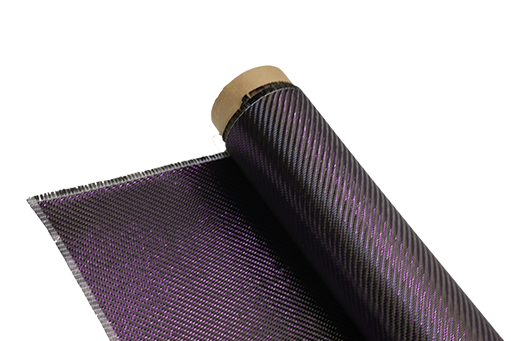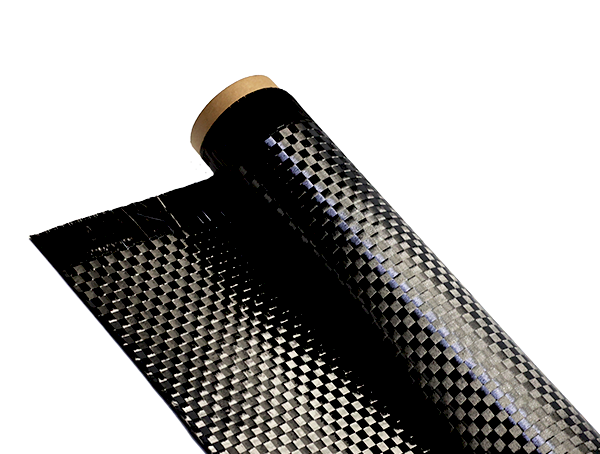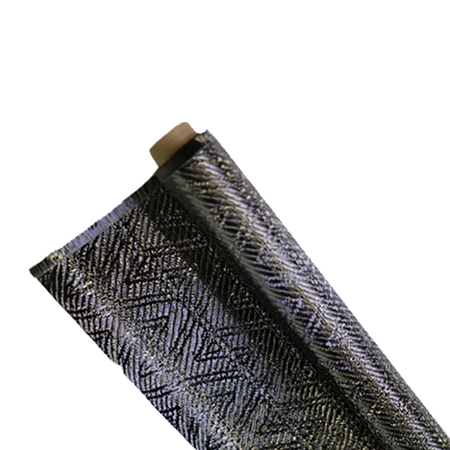Carbon Fiber Week 2025: What to Expect from the Industry
-
Table of Contents
“Carbon Fiber Week 2025: Shaping the Future of Innovation and Sustainability in Composites.”
Carbon Fiber Week 2025 is set to be a pivotal event for the composites industry, showcasing the latest advancements and innovations in carbon fiber technology. As the demand for lightweight, high-strength materials continues to grow across various sectors, including aerospace, automotive, and sports equipment, this week-long event will bring together industry leaders, researchers, and enthusiasts to explore emerging trends, sustainable practices, and cutting-edge applications. Attendees can expect a series of keynote presentations, panel discussions, and hands-on workshops that highlight the future of carbon fiber manufacturing, recycling initiatives, and the integration of smart materials. With a focus on collaboration and knowledge sharing, Carbon Fiber Week 2025 promises to be an essential platform for networking and driving the industry forward.
Innovations in Carbon Fiber Manufacturing Techniques
As the carbon fiber industry continues to evolve, the upcoming Carbon Fiber Week 2025 promises to showcase groundbreaking innovations in manufacturing techniques that are set to redefine the landscape of this advanced material. With its unique combination of high strength, low weight, and resistance to corrosion, carbon fiber has become a material of choice across various sectors, including aerospace, automotive, and sports equipment. Consequently, the demand for more efficient and sustainable manufacturing processes has never been greater.
One of the most significant trends anticipated for 2025 is the advancement of automated manufacturing techniques. Automation has the potential to enhance production efficiency while reducing labor costs and human error. For instance, the integration of robotics in the layup process, where carbon fiber sheets are arranged in specific orientations, is expected to streamline operations. This not only accelerates production times but also ensures a higher degree of precision, which is crucial for applications that require stringent quality control, such as aerospace components. Furthermore, the use of automated systems can facilitate the handling of complex geometries, allowing manufacturers to explore innovative designs that were previously challenging to achieve.
In addition to automation, the development of new resin systems is poised to revolutionize carbon fiber manufacturing. Traditional epoxy resins, while effective, often require lengthy curing times and can be less environmentally friendly. Emerging bio-based resins and thermoplastic materials are gaining traction, offering faster curing times and improved recyclability. These advancements not only enhance the sustainability of carbon fiber products but also open up new avenues for their application. For example, thermoplastic carbon fiber composites can be reshaped and reformed, providing manufacturers with greater flexibility in design and production. This adaptability is particularly beneficial in industries where rapid prototyping and iterative design processes are essential.
Moreover, the incorporation of additive manufacturing techniques, commonly known as 3D printing, is expected to play a pivotal role in the future of carbon fiber production. By enabling the layer-by-layer construction of complex structures, 3D printing allows for unprecedented design freedom and material efficiency. This technique can significantly reduce waste, as it utilizes only the necessary amount of material for each component. As the technology matures, it is likely that we will see an increase in hybrid manufacturing processes that combine traditional carbon fiber layup with additive techniques, resulting in components that are both lightweight and structurally optimized.
Another area of innovation lies in the recycling of carbon fiber materials. As the industry grapples with the challenge of sustainability, the development of effective recycling methods is becoming increasingly important. New processes that can reclaim carbon fibers from end-of-life products are being explored, allowing manufacturers to reuse these materials in new applications. This not only reduces the environmental impact of carbon fiber production but also addresses the growing concern over resource scarcity.
As we look forward to Carbon Fiber Week 2025, it is clear that the industry is on the brink of significant transformation. The convergence of automation, advanced resin systems, additive manufacturing, and recycling technologies is set to enhance the efficiency, sustainability, and versatility of carbon fiber products. These innovations will not only meet the rising demand for high-performance materials but also pave the way for new applications that can benefit society as a whole. In this dynamic landscape, stakeholders from various sectors will gather to share insights, foster collaboration, and explore the future of carbon fiber manufacturing, making this event a pivotal moment for the industry.
Key Industry Players and Their Contributions
As the anticipation builds for Carbon Fiber Week 2025, industry stakeholders are keenly aware of the pivotal role that key players will have in shaping the future of carbon fiber technology. This event promises to be a significant gathering for professionals, researchers, and enthusiasts alike, providing a platform for showcasing innovations and discussing trends that are poised to redefine the landscape of the carbon fiber industry. Among the prominent contributors, several companies and organizations stand out due to their groundbreaking advancements and commitment to sustainability.
One of the leading figures in the carbon fiber sector is Toray Industries, a Japanese multinational corporation renowned for its extensive research and development efforts. Toray has consistently pushed the boundaries of carbon fiber applications, particularly in aerospace and automotive industries. Their recent innovations in lightweight, high-strength materials have not only enhanced performance but also contributed to fuel efficiency and reduced emissions. As the industry moves towards more sustainable practices, Toray’s commitment to eco-friendly production methods will likely be a focal point during Carbon Fiber Week 2025, inspiring discussions on how to balance performance with environmental responsibility.
In addition to Toray, Hexcel Corporation has emerged as a significant player in the carbon fiber market, particularly in the aerospace sector. Hexcel’s advanced composite materials have been instrumental in the development of next-generation aircraft, enabling manufacturers to achieve greater fuel efficiency and lower operational costs. Their ongoing collaboration with major aerospace companies underscores the importance of partnerships in driving innovation. At Carbon Fiber Week 2025, Hexcel is expected to share insights into their latest projects and the future of composite materials in aviation, further solidifying their position as a leader in the industry.
Moreover, the automotive sector is witnessing a surge in interest in carbon fiber, with companies like BMW and Ford leading the charge. BMW, for instance, has integrated carbon fiber into its production processes, particularly in high-performance models. Their use of carbon fiber reinforced plastic (CFRP) not only enhances vehicle performance but also aligns with the industry’s shift towards lightweight materials for improved fuel efficiency. Ford, on the other hand, is exploring the potential of carbon fiber in electric vehicle production, aiming to reduce weight and increase range. The discussions at Carbon Fiber Week 2025 will likely highlight these automotive advancements, showcasing how traditional manufacturers are adapting to new technologies and consumer demands.
Furthermore, the role of research institutions and universities cannot be overlooked. Organizations such as the National Institute of Standards and Technology (NIST) and various academic institutions are at the forefront of carbon fiber research, exploring new manufacturing techniques and applications. Their contributions are vital for fostering innovation and ensuring that the industry remains competitive on a global scale. During Carbon Fiber Week 2025, these institutions will likely present their findings, offering valuable insights into the future of carbon fiber technology and its potential applications across various sectors.
As the event approaches, it is clear that the contributions of these key industry players will be instrumental in shaping the discussions and innovations that emerge. The collaborative efforts between corporations, research institutions, and industry leaders will not only drive advancements in carbon fiber technology but also pave the way for a more sustainable future. With a focus on innovation, sustainability, and collaboration, Carbon Fiber Week 2025 promises to be a landmark event that will influence the trajectory of the carbon fiber industry for years to come.
Future Applications of Carbon Fiber in Various Sectors
As we look ahead to Carbon Fiber Week 2025, the anticipation surrounding the future applications of carbon fiber across various sectors is palpable. This advanced material, known for its exceptional strength-to-weight ratio and versatility, is poised to revolutionize industries ranging from aerospace to automotive, and even into the realms of sports and healthcare. The ongoing research and development in carbon fiber technology suggest that its applications will expand significantly, leading to innovations that could reshape our everyday lives.
In the aerospace sector, carbon fiber has already made significant inroads, primarily due to its lightweight properties that contribute to fuel efficiency and performance. As manufacturers continue to seek ways to reduce emissions and enhance aircraft performance, the integration of carbon fiber composites is expected to increase. Future aircraft designs may incorporate even more advanced carbon fiber structures, allowing for lighter, more fuel-efficient models that can meet the growing demands for sustainable air travel. Furthermore, the potential for 3D printing with carbon fiber materials could lead to on-demand production of aircraft components, reducing waste and streamlining supply chains.
Transitioning to the automotive industry, the use of carbon fiber is anticipated to become more prevalent as manufacturers strive to meet stringent environmental regulations and consumer demands for high-performance vehicles. The lightweight nature of carbon fiber not only improves fuel efficiency but also enhances vehicle handling and safety. As electric vehicles (EVs) gain traction, the need for lightweight materials becomes even more critical to extend battery life and range. Consequently, we can expect to see an increase in the use of carbon fiber in EVs, with manufacturers exploring innovative designs that incorporate this material into body panels, chassis, and even interior components.
Moreover, the sports industry is also set to benefit from advancements in carbon fiber technology. Athletes and sports equipment manufacturers are increasingly turning to carbon fiber to create lighter, stronger, and more durable products. From bicycles to tennis rackets, the performance enhancements offered by carbon fiber are undeniable. As technology progresses, we may witness the development of customized carbon fiber gear tailored to individual athletes, optimizing performance and reducing the risk of injury. This trend could extend beyond professional sports, making high-performance equipment more accessible to amateur athletes and fitness enthusiasts alike.
In addition to these sectors, the healthcare industry is beginning to explore the potential of carbon fiber in medical applications. The material’s biocompatibility and strength make it an ideal candidate for prosthetics and orthopedic implants. As research continues, we may see the emergence of carbon fiber-based medical devices that are not only lighter and stronger but also more adaptable to the human body. This could lead to improved patient outcomes and a higher quality of life for individuals requiring such interventions.
As we approach Carbon Fiber Week 2025, it is clear that the future applications of carbon fiber are vast and varied. The material’s unique properties position it as a key player in addressing the challenges faced by multiple industries. With ongoing innovations and a commitment to sustainability, carbon fiber is set to play a pivotal role in shaping the future of technology and manufacturing. As stakeholders gather to discuss these advancements, the excitement surrounding the potential of carbon fiber will undoubtedly inspire new ideas and collaborations, paving the way for a more efficient and sustainable future.
Q&A
1. **What are the main themes of Carbon Fiber Week 2025?**
The main themes include advancements in carbon fiber manufacturing processes, sustainability in production, and innovations in applications across various industries such as aerospace, automotive, and sports equipment.
2. **Who are the key speakers or participants expected at the event?**
Key speakers are expected to include industry leaders, researchers, and innovators from major companies in the carbon fiber sector, as well as representatives from academic institutions and government agencies focused on materials science.
3. **What networking opportunities will be available during Carbon Fiber Week 2025?**
Attendees can expect various networking events, including panel discussions, workshops, and dedicated networking sessions designed to facilitate connections between industry professionals, researchers, and potential collaborators.Carbon Fiber Week 2025 is expected to showcase significant advancements in carbon fiber technology, emphasizing sustainability, lightweight applications, and enhanced performance across various industries. Attendees can anticipate discussions on innovative manufacturing processes, recycling methods, and the integration of carbon fiber in emerging sectors such as aerospace, automotive, and renewable energy. Networking opportunities and expert panels will provide insights into market trends and future developments, positioning carbon fiber as a key material in the transition to more efficient and eco-friendly solutions. Overall, the event will highlight the industry’s commitment to innovation and sustainability, setting the stage for future growth and collaboration.

